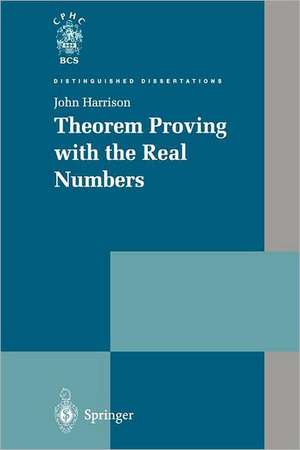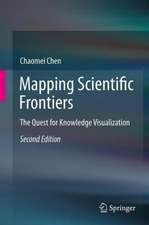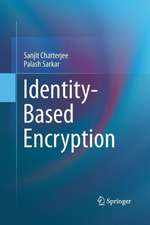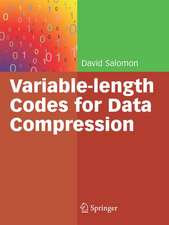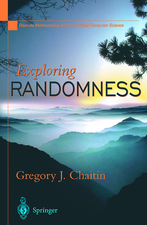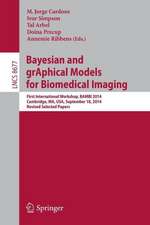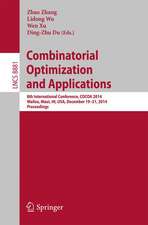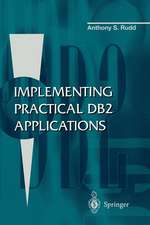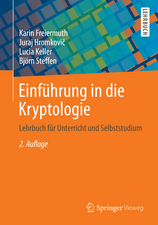Theorem Proving with the Real Numbers: Distinguished Dissertations
Autor John Harrisonen Limba Engleză Paperback – 20 noi 2011
Din seria Distinguished Dissertations
- 20%
 Preț: 290.51 lei
Preț: 290.51 lei - 15%
 Preț: 633.68 lei
Preț: 633.68 lei - 15%
 Preț: 645.47 lei
Preț: 645.47 lei - 20%
 Preț: 654.05 lei
Preț: 654.05 lei - 20%
 Preț: 647.79 lei
Preț: 647.79 lei - 20%
 Preț: 994.92 lei
Preț: 994.92 lei - 20%
 Preț: 648.26 lei
Preț: 648.26 lei - 20%
 Preț: 328.60 lei
Preț: 328.60 lei - 20%
 Preț: 641.34 lei
Preț: 641.34 lei - 20%
 Preț: 328.09 lei
Preț: 328.09 lei - 20%
 Preț: 325.30 lei
Preț: 325.30 lei - 20%
 Preț: 926.94 lei
Preț: 926.94 lei - 20%
 Preț: 639.52 lei
Preț: 639.52 lei - 20%
 Preț: 603.37 lei
Preț: 603.37 lei - 20%
 Preț: 637.56 lei
Preț: 637.56 lei - 20%
 Preț: 643.30 lei
Preț: 643.30 lei - 20%
 Preț: 640.51 lei
Preț: 640.51 lei - 20%
 Preț: 640.19 lei
Preț: 640.19 lei - 20%
 Preț: 325.63 lei
Preț: 325.63 lei
Preț: 640.69 lei
Preț vechi: 800.86 lei
-20% Nou
Puncte Express: 961
Preț estimativ în valută:
122.61€ • 127.54$ • 101.22£
122.61€ • 127.54$ • 101.22£
Carte tipărită la comandă
Livrare economică 15-29 aprilie
Preluare comenzi: 021 569.72.76
Specificații
ISBN-13: 9781447115939
ISBN-10: 1447115937
Pagini: 200
Ilustrații: XII, 186 p.
Dimensiuni: 155 x 235 x 11 mm
Greutate: 0.29 kg
Ediția:Softcover reprint of the original 1st ed. 1998
Editura: SPRINGER LONDON
Colecția Springer
Seria Distinguished Dissertations
Locul publicării:London, United Kingdom
ISBN-10: 1447115937
Pagini: 200
Ilustrații: XII, 186 p.
Dimensiuni: 155 x 235 x 11 mm
Greutate: 0.29 kg
Ediția:Softcover reprint of the original 1st ed. 1998
Editura: SPRINGER LONDON
Colecția Springer
Seria Distinguished Dissertations
Locul publicării:London, United Kingdom
Public țintă
ResearchCuprins
1. Introduction.- 1.1 Symbolic computation.- 1.2 Verification.- 1.3 Higher order logic.- 1.4 Theorem proving vs. model checking.- 1.5 Automated vs. interactive theorem proving.- 1.6 The real numbers.- 1.7 Concluding remarks.- 2 Constructing the Real Numbers.- 2.1 Properties of the real numbers.- 2.2 Uniqueness of the real numbers.- 2.3 Constructing the real numbers.- 2.4 Positional expansions.- 2.5 Cantor’s method.- 2.6 Dedekind’s method.- 2.7 What choice?.- 2.8 Lemmas about nearly-multiplicative functions.- 2.9 Details of the construction.- 2.10 Adding negative numbers.- 2.11 Handling equivalence classes.- 2.12 Summary and related work.- 3. Formalized Analysis.- 3.1 The rigorization and formalization of analysis.- 3.2 Some general theories.- 3.3 Sequences and series.- 3.4 Limits, continuity and differentiation.- 3.5 Power series and the transcendental functions.- 3.6 Integration.- 3.7 Summary and related work.- 4. Explicit Calculations.- 4.1 The need for calculation.- 4.2 Calculation with natural numbers.- 4.3 Calculation with integers.- 4.4 Calculation with rationals.- 4.5 Calculation with reals.- 4.6 Summary and related work.- 5. A Decision Procedure for Real Algebra.- 5.1 History and theory.- 5.2 Real closed fields.- 5.3 Abstract description of the algorithm.- 5.4 The HOL Implementation.- 5.5 Optimizing the linear case.- 5.6 Results.- 5.7 Summary and related work.- 6. Computer Algebra Systems.- 6.1 Theorem provers vs. computer algebra systems.- 6.2 Finding and checking.- 6.3 Combining systems.- 6.4 Applications.- 6.5 Summary and related work.- 7. Floating Point Verification.- 7.1 Motivation.- 7.2 Floating point error analysis.- 7.3 Specifying floating point operations.- 7.4 Idealized integer and floating point operations.- 7.5 A square root algorithm.- 7.6 ACORDIC natural logarithm algorithm.- 7.7 Summary and related work.- 8. Conclusions.- 8.1 Mathematical contributions.- 8.2 The formalization of mathematics.- 8.3 The LCF approach to theorem proving.- 8.4 Computer algebra systems.- 8.5 Verification applications.- 8.6 Concluding remarks.- A. Logical foundations of HOL.- B. Recent developments.
Caracteristici
Formal development of classical mathematics using a computer * Combines traditional lines of research in theorem proving and computer algebra * Shows usefulness of real numbers in verification
